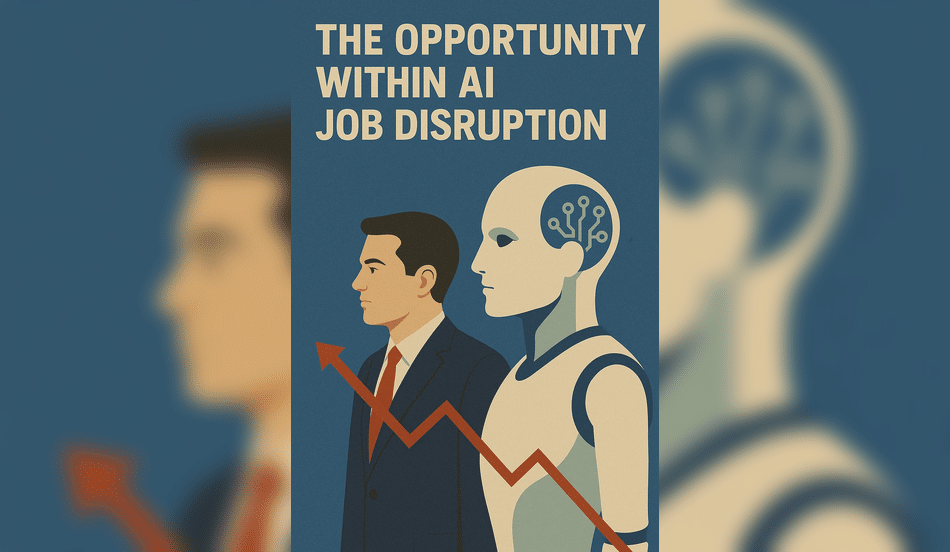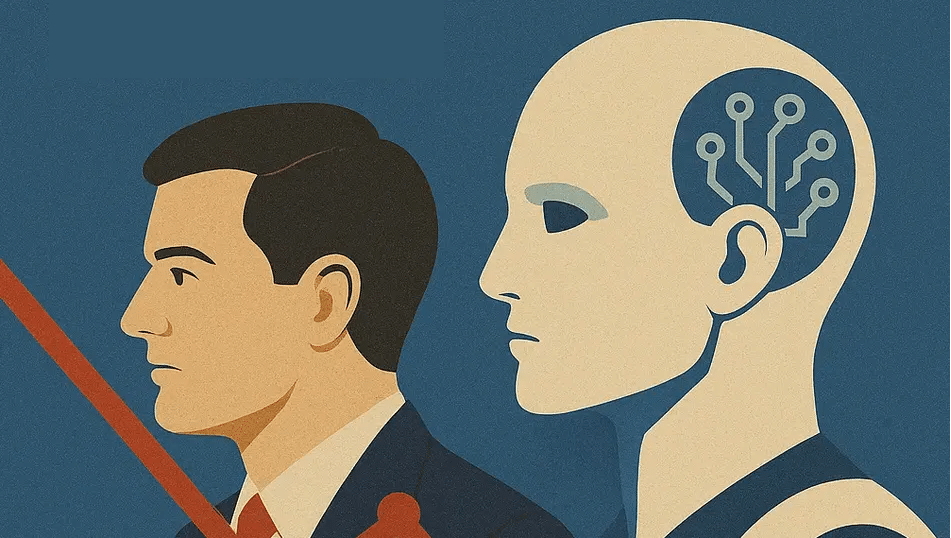AI-driven job automation is rapidly transforming the workplace, prompting urgent discussions among experts and industry leaders. The artificial intelligence revolution is accelerating to the point where entire job categories may vanish. In a bold prediction, Anthropic CEO Dario Amodei recently warned of a potential “labor market bloodbath” that could eliminate half of all entry-level white-collar jobs within just five years.
This dramatic forecast has intensified global concern about the speed and scope of AI-driven job automation, especially its long-term implications for workers in finance, customer support, legal services, and more. As these technologies evolve, so too must the strategies for preparing and protecting today’s workforce.
Silicon Valley’s AI Job Disruption Predictions: Hype or Reality?
Tech Leaders Sound the Alarm
When Anthropic’s CEO compares the coming wave of AI to “an army of robots from the sci-fi movie I, Robot,” it paints a concerning picture of the future workplace. This sentiment isn’t isolated. Shopify CEO Toby Lütke instructed teams in an April memo to demonstrate why they can’t accomplish tasks with AI before requesting additional headcount—a clear indication that AI job disruption is already influencing hiring decisions at major companies.
Expert Skepticism About the Timeline
However, not everyone agrees with these dramatic forecasts. AI expert and “Taming Silicon Valley” author Gary Marcus offers a more measured perspective: “Entry-level workers probably are the most affected, but most white-collar jobs aren’t going anywhere that soon.” This highlights the important distinction between immediate AI job disruption and longer-term workplace evolution.
The Hidden Reality of AI Job Disruption
Quiet Displacement Already Happening
There’s mounting evidence of a phenomenon that’s difficult to track: jobs quietly disappearing because of AI implementation. Companies may not announce these changes publicly, but the effects are becoming increasingly visible. As one industry observer notes, “Businesses are using AI as an excuse because they want to cut employees, and so they use it as a cover.” This covert AI job disruption may be more widespread than official statistics suggest.
Data Tracking the Transformation
Statistics Canada has begun compiling data on the extent to which AI is replacing human workers. Early findings suggest companies might be able to “use nine employees where they used ten”—a subtle but significant reduction in workforce needs. This 10% efficiency gain through AI job disruption could translate to millions of positions globally if implemented across industries.
🤖 Prepare for the Age of AI-Driven Job Automation
Worried about how automation could affect your career?
Explore resilient and future-proof roles in AI, Data Science, Cloud Computing, and Tech Innovation — industries leading the transformation of white-collar work.
WhatJobs connects you with high-demand career paths designed to thrive in an era of AI-driven job automation and rapid workplace change.
👉 Browse top tech and automation-resilient jobs now — and future-proof your career.The Opportunity Within AI Job Disruption
Explosive Growth in AI-Related Careers
Despite concerns about job losses, the data reveals a compelling counternarrative. Job numbers in AI-exposed occupations in Canada have grown by an impressive 108% since 2019. This dramatic increase demonstrates that AI job disruption isn’t just eliminating positions—it’s creating entirely new career paths for those with the right skills.
Significant Wage Premiums for AI Skills
Workers who develop AI-relevant skills are being handsomely rewarded. According to PwC research, AI-skilled professionals are seeing an average 56% wage premium—double last year’s premium. This financial incentive highlights how AI job disruption is creating significant opportunities alongside the challenges.

Historical Context for Technological Revolution
As one expert notes, “Every single industrial revolution that happened created more opportunities. But these opportunities had to be taken by people that were ready for them, that had the right skill set.” This historical perspective suggests that while AI job disruption will eliminate certain roles, it will likely create more jobs than it destroys—for those prepared to adapt.
Hiring AI Talent?
Looking to build your AI-ready workforce during this period of technological transformation? Post jobs for free with WhatJobs and connect with skilled professionals prepared for the future of work.
Rethinking Education and Career Preparation in the Age of AI
The Declining Value of Traditional Degrees
The AI job disruption is changing not just what work we do, but how we prepare for careers. “University degrees are becoming less and less important on their own,” notes one education expert. This shift suggests that traditional four-year degrees may no longer provide sufficient preparation for a rapidly evolving job market.
Rise of Microcredentials and Continuous Learning
Instead, the future may belong to those who embrace “microcredentialization”—combining the best elements from different degrees and courses to create a personalized skill portfolio. This approach to education aligns perfectly with the needs created by AI job disruption, allowing workers to quickly adapt to emerging opportunities.
Key Skills for Thriving Amid AI Job Disruption
To navigate the changing landscape successfully, workers should focus on developing:
- Critical thinking and problem-solving abilities that AI struggles to replicate
- Emotional intelligence and interpersonal skills for roles requiring human connection
- Technical literacy to work alongside AI systems effectively
- Adaptability and continuous learning habits to evolve with technological changes
- Creative thinking capabilities that extend beyond algorithmic approaches
These skills will remain valuable even as AI job disruption transforms specific roles and responsibilities across industries.
Preparing for the Future of Work in an AI-Transformed Economy
The AI job disruption we’re witnessing represents both challenge and opportunity. While certain entry-level and routine white-collar positions may indeed disappear faster than expected, new roles are emerging that combine human creativity with technological capability. The key to thriving in this environment is proactive skill development and a willingness to adapt.
As we navigate this transformation, it’s worth remembering that previous technological revolutions—from steam power to computers—ultimately created more prosperity and opportunity than they destroyed. The AI job disruption will likely follow a similar pattern, though the transition period may prove challenging for those caught unprepared.
By staying informed about industry trends, continuously developing relevant skills, and maintaining flexibility in career planning, workers can position themselves to benefit from rather than be displaced by the AI revolution reshaping our economy.
FAQ About AI Job Disruption
How quickly will AI job disruption impact white-collar employment?
The pace of AI job disruption remains debated among experts. While Anthropic’s CEO predicts half of entry-level white-collar jobs could disappear within five years, other AI specialists like Gary Marcus suggest a more gradual transformation. The reality likely varies significantly by industry and role, with routine, data-heavy positions facing faster disruption than those requiring complex human judgment, creativity, or interpersonal skills.
Which industries are most vulnerable to AI job disruption in the next decade?
Industries with high volumes of standardized information processing are experiencing the most immediate AI job disruption. This includes sectors like financial services (particularly in areas like basic accounting, data analysis, and customer service), legal services (document review and basic research), content creation (routine writing and editing), and administrative support. Jobs involving pattern recognition in data, like certain medical diagnostics and basic software coding, are also seeing significant AI job disruption.
What skills will remain valuable despite increasing AI job disruption?
Despite advancing AI job disruption, several human capabilities remain difficult to automate. These include creative problem-solving in novel situations, emotional intelligence and interpersonal persuasion, ethical decision-making, interdisciplinary thinking, and physical dexterity combined with judgment. Additionally, the ability to effectively collaborate with AI systems—understanding their capabilities and limitations—is becoming increasingly valuable as AI job disruption continues across industries.
How can workers best prepare for AI job disruption in their careers?
To navigate AI job disruption successfully, workers should adopt a strategy of continuous skill development. This includes pursuing microcredentials in emerging technologies, developing strong “human” skills like critical thinking and emotional intelligence, building technical literacy to work effectively with AI tools, and cultivating adaptability. Creating a personal learning roadmap that combines formal education with practical experience and staying informed about AI developments in your specific field can help position you to benefit from AI job disruption rather than be displaced by it.
Will AI job disruption create more opportunities than it eliminates?
Historical patterns suggest AI job disruption will likely create more jobs than it eliminates over the long term. Statistics already show 108% growth in AI-exposed occupations in Canada since 2019, and significant wage premiums for workers with AI skills. However, these new opportunities require different skills than the roles being displaced. The net positive effect of AI job disruption depends largely on our collective ability to retrain workers, adapt education systems, and implement supportive policies during the transition period.




